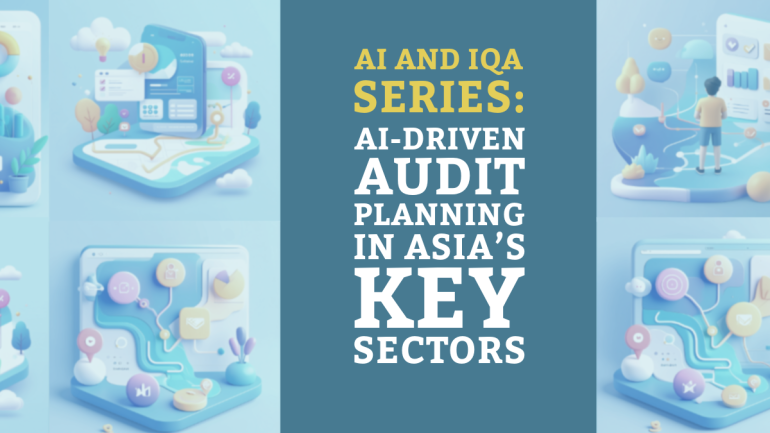Table of Contents
Introduction
Non-verbal communication, the subtle yet profound language without words, is a pivotal aspect of interpersonal dynamics within the workplace. This form of communication, encompassing gestures, facial expressions, posture, tone of voice, and the physical setup of our work environments, speaks volumes about our intentions, emotions, and level of engagement. In the intricate web of workplace interactions and the cultivation of a positive organizational culture, non-verbal cues play an instrumental role, often speaking louder than the spoken word. This blog delves into the nuanced ways non-verbal communication shapes team dynamics, influences leadership effectiveness, and molds the overall atmosphere of the workplace, highlighting its critical importance in fostering an environment of understanding, respect, and collaboration.
Types of Non-Verbal Communication
The realm of non-verbal communication in the workplace is rich and varied, encompassing a spectrum of cues that convey messages without the need for words. From the subtle twitch of an eyebrow in a meeting to the confident stride of a leader entering a room, each element of non-verbal communication carries its own weight and meaning. Eye contact, for instance, can serve as a powerful tool in establishing connections, signaling attention and interest, while the physical distance maintained between colleagues can reflect their comfort levels and relational boundaries. Similarly, the tone of voice—whether warm and inviting or cold and distant—can significantly alter the reception of a verbal message. By understanding these different types of non-verbal cues, professionals can harness their power to enhance communication, foster trust, and build stronger relationships within the workplace.

The Role of Non-Verbal Communication in Team Dynamics
In the context of team dynamics, non-verbal communication acts as both a bridge and a barrier to effective collaboration. Positive non-verbal cues, such as nodding in agreement or leaning in during conversations, can reinforce a sense of camaraderie and cooperation among team members, promoting an atmosphere of mutual support and understanding. Conversely, negative cues, such as crossing arms during discussions or avoiding eye contact, can create feelings of exclusion or defensiveness, hindering open communication and collaboration. Teams that are attuned to these non-verbal signals can navigate the complexities of group dynamics more smoothly, using this awareness to foster a culture of inclusivity and collective problem-solving.
Non-Verbal Communication and Leadership
For leaders, mastering the art of non-verbal communication is tantamount to wielding a double-edged sword. On one side, effective use of non-verbal cues can magnify a leader’s presence, imbuing their interactions with authenticity and persuasiveness. Leaders who employ positive non-verbal communication—such as maintaining eye contact, exhibiting open body language, and mirroring the gestures of their team members—can engender trust and inspire confidence. On the flip side, a lack of awareness or misalignment between a leader’s verbal and non-verbal messages can erode credibility and undermine their efforts to motivate and unite their team. Thus, leaders who are mindful of their non-verbal cues can significantly enhance their impact, guiding their teams with a clearer vision and a more compelling presence.
Mastering the art of non-verbal communication is crucial for leaders. Effective use of non-verbal cues can amplify a leader’s presence and make their interactions authentic and persuasive. Leaders who use positive non-verbal communication, including maintaining eye contact, displaying open body language, and mirroring their team members’ gestures, can build trust and inspire confidence. However, if a leader is unaware or their verbal and non-verbal messages are not aligned, it can undermine their credibility and hinder their ability to motivate and unite their team. Therefore, leaders who are mindful of their non-verbal cues can have a significant impact on guiding their teams with a clear vision and a compelling presence.
Challenges and Misinterpretations
While non-verbal communication can enrich workplace interactions, it also presents challenges and risks for misinterpretation, especially in culturally diverse settings. What constitutes a respectful gesture in one culture might be perceived as offensive in another, underscoring the importance of cultural competence in non-verbal communication. Similarly, personal differences in the expression and interpretation of non-verbal cues can lead to misunderstandings, potentially affecting relationships and teamwork. Recognizing these challenges is the first step toward mitigating their impact, requiring individuals to approach non-verbal communication with sensitivity, openness, and a willingness to clarify intentions when necessary.
Improving Non-Verbal Communication Skills in the Workplace
Enhancing non-verbal communication skills within the workplace is a journey of continuous learning and adaptation. Developing keen observation skills to notice and interpret the non-verbal cues of others, coupled with heightened self-awareness of one’s own non-verbal signals, lays the groundwork for more nuanced and effective interactions. Seeking feedback from colleagues and engaging in reflective practices can provide valuable insights into how one’s non-verbal communication is perceived, opening avenues for growth and improvement. Furthermore, participating in specialized training programs designed to enhance non-verbal communication skills can equip individuals and teams with the knowledge and strategies needed to navigate the complexities of non-verbal cues, ultimately leading to a more harmonious and productive workplace environment.
Conclusion
The influence of non-verbal communication within the workplace transcends individual interactions, permeating the very fabric of organizational culture and effectiveness. By acknowledging its significance and actively working to improve non-verbal communication skills, businesses can unlock new levels of collaboration, leadership, and workplace harmony. This commitment to understanding and leveraging non-verbal cues not only enriches the tapestry of workplace relationships but also empowers organizations to navigate the challenges of the modern business environment with greater agility and cohesion. As the landscape of professional communication continues to evolve, the mastery of non-verbal cues remains an enduring asset, fostering environments where clarity, respect, and mutual understanding flourish.
FAQs
Q1: How can I improve my non-verbal communication skills in the workplace?
A1: Improving non-verbal communication involves becoming more aware of your own body language, facial expressions, and tone of voice. Observing the non-verbal cues of others can also provide insights into how they are received. Engaging in role-play exercises, seeking feedback from colleagues, and attending workshops or training sessions focused on non-verbal communication are effective strategies for enhancement.
Q2: Can non-verbal communication really impact team performance?
A2: Yes, non-verbal communication significantly impacts team performance. Positive non-verbal cues, such as open body language and attentive listening, can foster an environment of trust and collaboration, leading to improved team dynamics and productivity. Conversely, negative cues can create misunderstandings and conflicts, hindering team performance.
Q3: What’s the role of non-verbal communication in leadership?
A3: In leadership, non-verbal communication is crucial for demonstrating confidence, authority, and empathy. Effective leaders use non-verbal cues to motivate and inspire their teams, set the tone for interactions, and build rapport. Leadership presence is often communicated through non-verbal signals, which can influence how leaders are perceived by their teams.
Q4: How can cultural differences affect non-verbal communication in the workplace?
A4: Cultural differences can greatly impact the interpretation of non-verbal cues. Gestures, eye contact, and expressions that are positive in one culture may be negative or offensive in another. Awareness and understanding of these cultural nuances are essential for fostering effective communication and avoiding misunderstandings in a diverse workplace.
Q5: Are there any specific tools or technologies that can help improve non-verbal communication in the workplace?
A5: While non-verbal communication is inherently personal and nuanced, certain technologies can aid in its improvement. Video conferencing tools, for example, allow for the observation of facial expressions and body language during remote meetings. Additionally, feedback platforms can facilitate the collection of insights on communication styles, including non-verbal aspects, encouraging continuous improvement.




